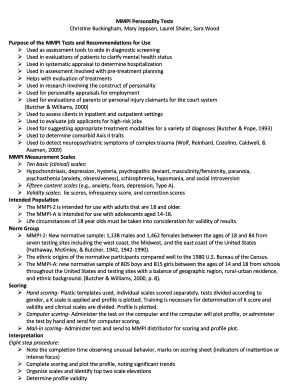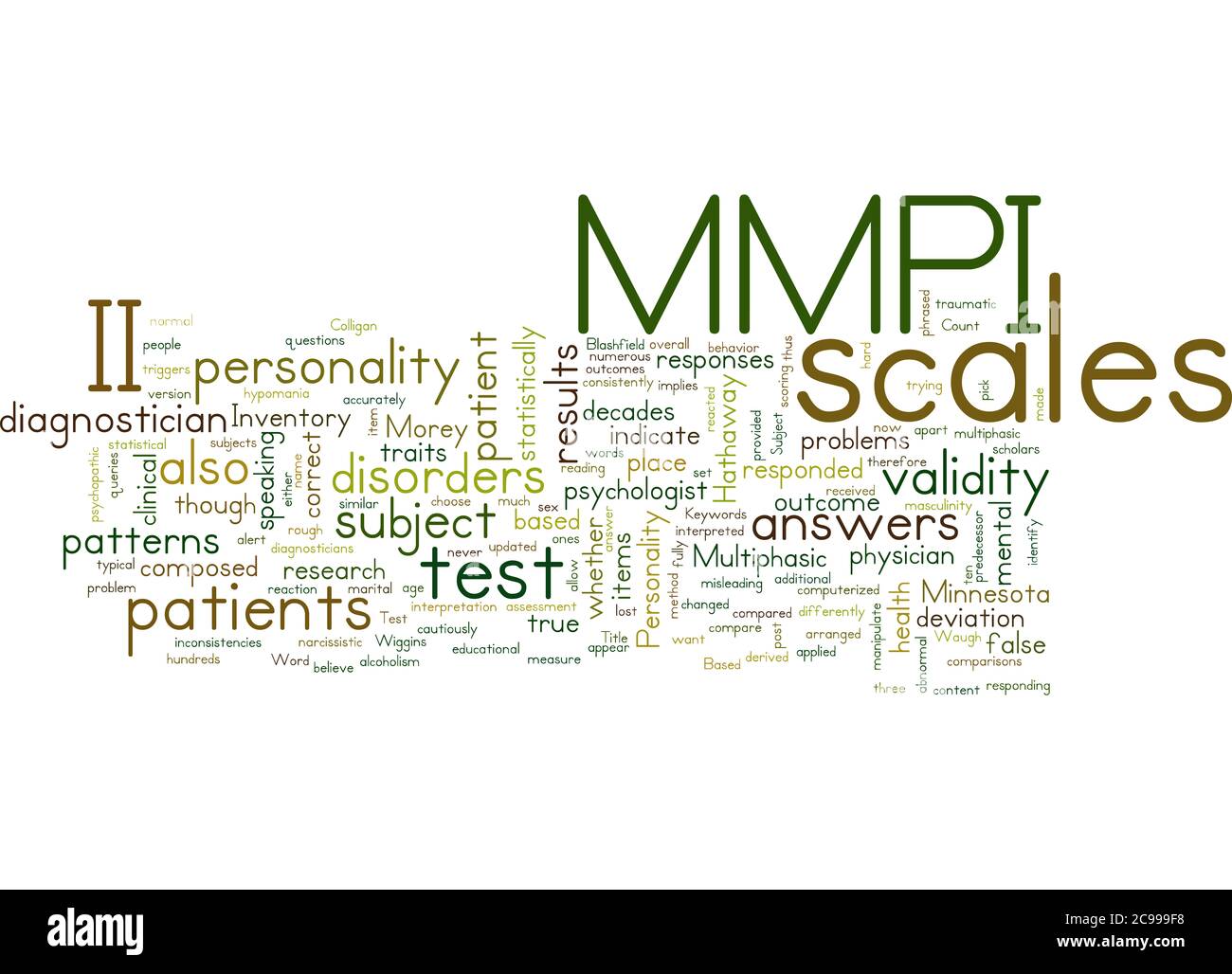

The other sources in this section are journal articles, some also included in Basic Readings, provided in order to document the original development of each of the ten Clinical Scales. The only other book in this section is the Hathaway and Meehl 1951 “atlas,” a collection of case histories intended to assist early practitioners. A number of key articles were published only in this volume. Welsh and Dahlstrom 1956, commonly referred to as Basic Readings, is a remarkable, detailed portrayal of the beginnings of the MMPI. The references listed here are those that provide the most detail on this stage of the development of the test. Items that exhibited a True-False proportion in the criterion group that differed significantly from the True-False proportion in the normative group were identified as members of the Clinical Scale for that syndrome. They reduced this to just over 500 items through rational judgment, and then administered the items to the group of 724 “Minnesota Normals” as well as sets of patients exhibiting the specific pathology at hand (the criterion groups). Briefly, Hathaway and McKinley collected a large set of over 1,000 items that was intended to be inclusive of all major symptoms of these syndromes. Subsequently, the Masculinity-Femininity and Social Introversion scales were added, resulting in the ten Clinical Scales that formed the core measures of the test until the RF was published in 2008. The initial diagnostic categories were Hypochondriasis, Depression, Hysteria, Psychopathic Deviate, Paranoia, Psychasthenia, Schizophrenia, and Hypomania. Psychiatric diagnosis at that time was based on Kraepelinian categories that had evolved to reflect psychodynamic theoretical constructs to varying degrees. Hathaway and McKinley sought to develop an omnibus test instrument that would identify the presence of any of the major clinical syndromes utilized during the 1935–1940 period. The RC Scales formed the basis of the third major revision of the test, the MMPI-2-Restructured Form (MMPI-2-RF), published in the latter half of 2008. These and other issues (e.g., excessive scale heterogeneity, noncontributing items) were the focus of a new set of scales, the Restructured Clinical Scales (RC Scales), published in monograph form in 2003.


This is related to problems with excessive item overlap among the Clinical Scales, and the failure to recognize and deal effectively with a broad “common factor” of psychopathology that was measured to varying degrees by all ten scales. Very briefly, the original Clinical Scales suffered from excessively high cross-scale correlations, which lowered discriminant validity.
#WHAT IS MMPI TEST PROFESSIONAL#
While this decision by the Restandardization Committee did assure continuity of the primary scales and thus widespread acceptance by the professional community in a short time, it also perpetuated significant psychometric problems in the Clinical Scales that were of increasing concern to both scholars and practitioners. Restandardization and item-level improvements were achieved, but the ten Clinical Scales were left almost entirely unaltered. Concerns about outdated and unrepresentative norms and about obsolete item content prompted a major revision of the test, a ten-year project culminating in 1989 with the MMPI-2. By the 1970s, comprehensive bibliographies included between 5,000 and 6,000 published articles, and today, including all versions, the number approaches 15,000. Finally, the MMPI was noted for its inclusion of explicit measures of test-taking attitude, inherent in the test itself (e.g., the “Lie scale”). Second, the MMPI was designed from the outset to be a broad-band measure covering all major psychopathological syndromes recognized in that time period, in contrast to existing instruments that tended to focus narrowly on certain issues (e.g., neurosis). The MMPI was the first to be developed using empirical keying and was far more effective as a result, a fact that was evident very early. First, extant personality tests of that time were rationally rather than empirically derived. The MMPI was a revolutionary assessment device in a number of key ways. The first formal publication was in 1940. Hathaway had begun active work on test development in the mid- to late 1930s, and the test was always used clinically even as it evolved. The Minnesota Multiphasic Personality Inventory (MMPI) is the most widely used and widely researched objective measure of psychopathology in history, a status it has held throughout its more than seventy-year existence.


 0 kommentar(er)
0 kommentar(er)
